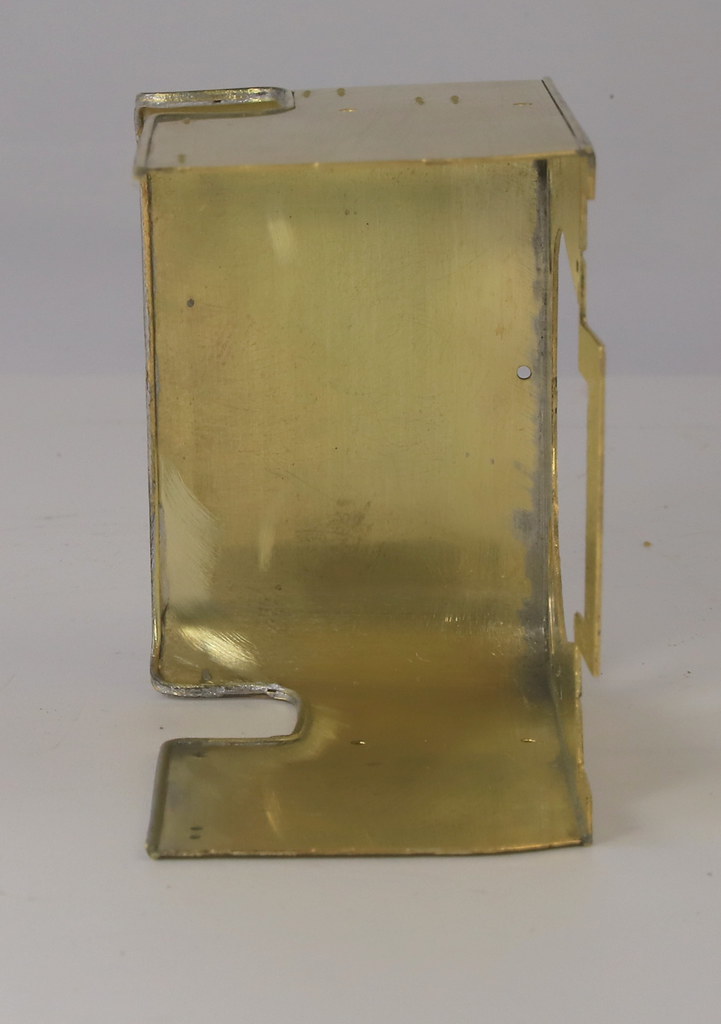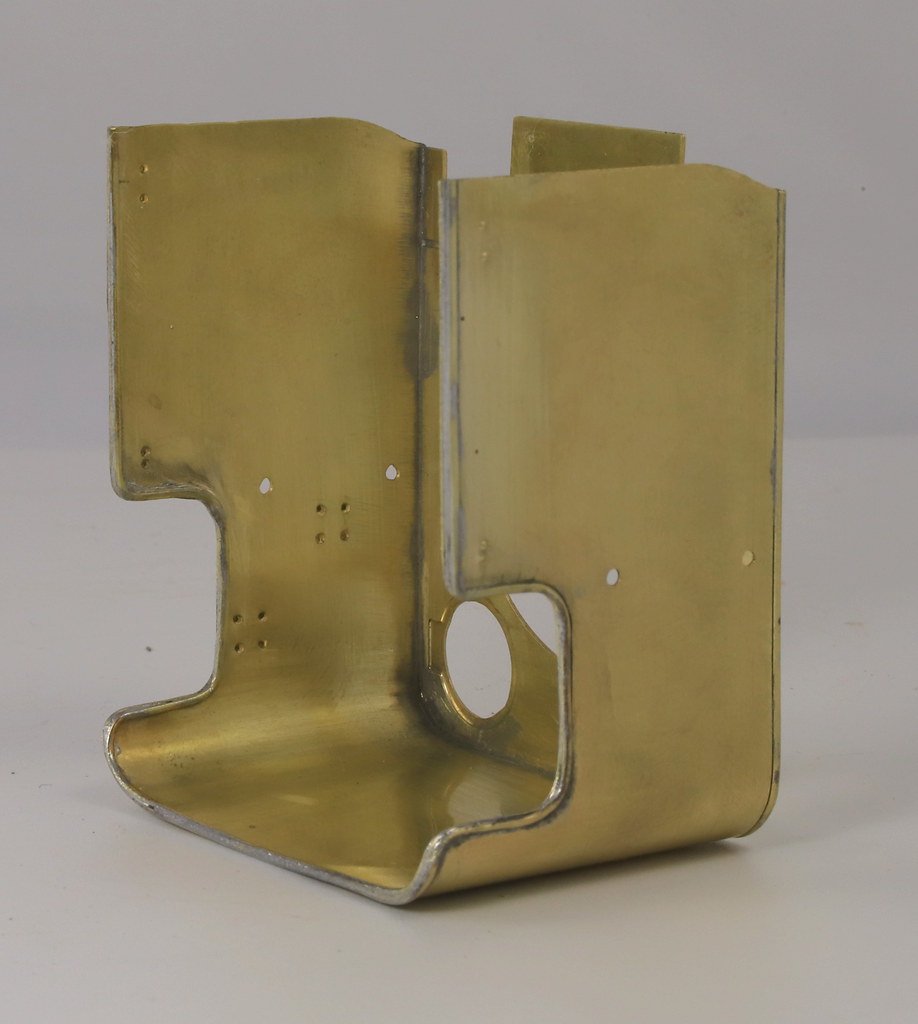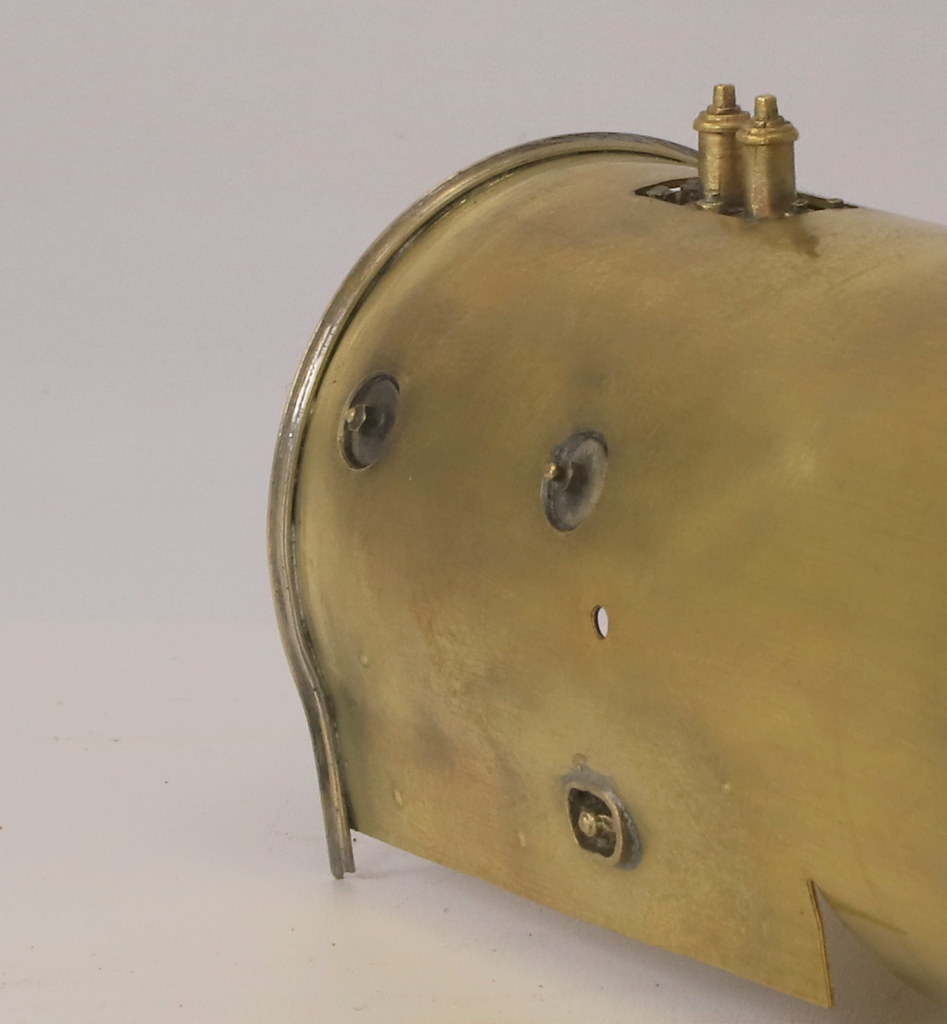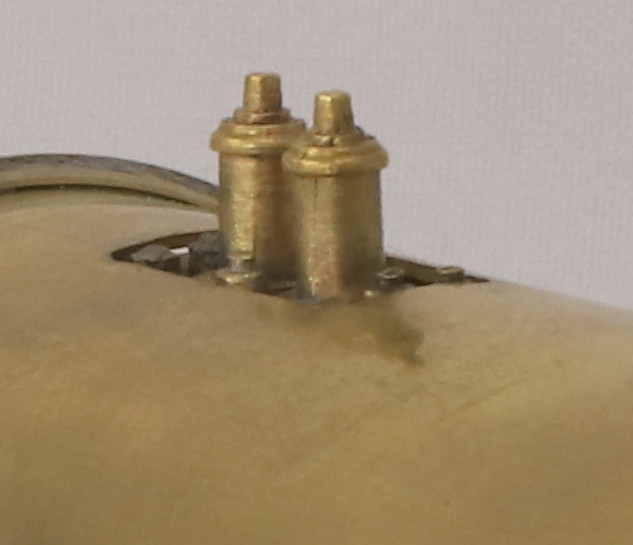Rob Pulham
Western Thunderer
Not much to show for two evenings work, but I have completed the sandboxes.
I did the same as Tony and removed the fold over top plate to fit as a separate item. I didn't have any brass channel to replace the front section so I scored the back with an Olfa cutter and then folded it as designed.
The first one went together without much trouble but I had to have a couple of goes at the second one before I was happy with it. The fillers are the etches provided sat on a short section of brass tube which I squashed into an oval with some pliers.
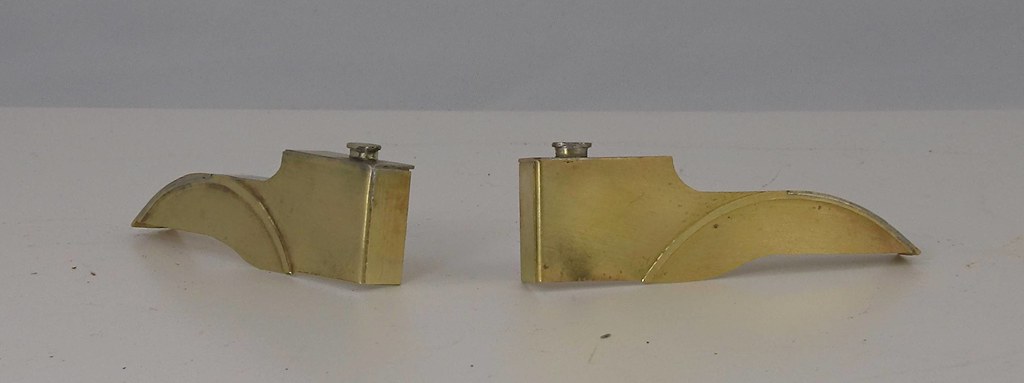

I did the same as Tony and removed the fold over top plate to fit as a separate item. I didn't have any brass channel to replace the front section so I scored the back with an Olfa cutter and then folded it as designed.
The first one went together without much trouble but I had to have a couple of goes at the second one before I was happy with it. The fillers are the etches provided sat on a short section of brass tube which I squashed into an oval with some pliers.




